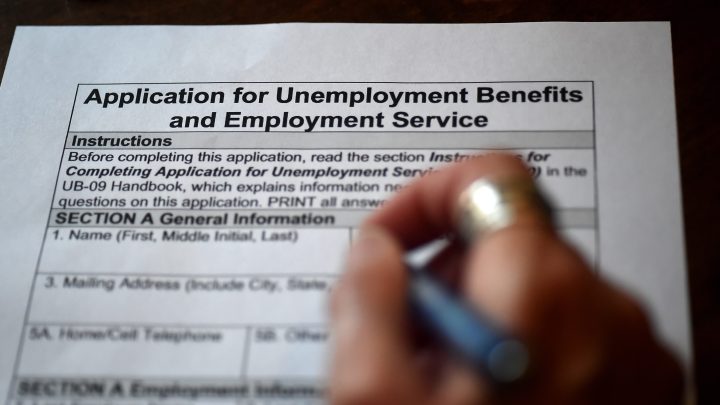
Half of Americans who lost work or wages are getting $0 jobless benefits
Half of Americans who lost work or wages are getting $0 jobless benefits

There’s a fierce debate going on in Washington, D.C., about whether to pass another round of stimulus on top of the trillions of dollars previously approved by Congress to help American businesses and households weather the pandemic economic storm.
A lot of federal money has already been earmarked to help people who have lost work and income due to COVID-19. Through the CARES Act, Congress added $600 a week in Pandemic Unemployment Compensation to every regular state unemployment insurance check going out right now and extended the duration of benefits for 13 additional weeks.
In addition, millions of people who wouldn’t ordinarily qualify for state unemployment insurance are now eligible for full benefits under the Pandemic Unemployment Assistance program. That includes gig workers, solo business owners and those out of work due to the pandemic, like people who have school-age children to take care of at home and ride-share drivers whose business has dried up.
Still, state and federal jobless benefits aren’t getting to millions who are eligible and need the money.
A report from the Brookings Institution’s Hamilton Project finds that according to the Treasury Department, federal and state governments had sent out $48 billion in unemployment checks by the end of April. But the amount of income that Americans lost in April from layoffs and lack of work due to the pandemic was at least $80 billion.
“The unemployment insurance probably covered about half of the drop in personal wage and salary income,” said Hamilton Project director Jay Shambaugh. “It’s not that everybody’s getting half as much unemployment insurance as they should. It’s really more — half of people are getting covered, and half are getting nothing right now.”
A major problem is that states have struggled to get up to speed with the new federal Pandemic Unemployment Assistance program, said Michele Evermore, senior researcher at the National Employment Law Project.
“A lot of people don’t understand that they’re eligible for PUA,” Evermore said. “Some states are completely denying people for regular unemployment insurance, and then inviting them to reapply for Pandemic Unemployment Assistance.”
And in many states, it’s been hard to make a regular unemployment claim in the first place. Florida has been notorious. Its antiquated computers and understaffed offices have been overwhelmed.
“I applied in the middle of the night on April 8,” said James Gamboa, 46, of Miami. Gamboa was laid off from his job tending bar poolside at a big downtown hotel in mid-March. He applied for unemployment as soon as he used up all his accrued vacation time.
“It took three to five hours to submit my claim, since I was being kicked off the website repeatedly. It took a couple weeks for it to be processed.”
Gamboa started receiving unemployment checks three weeks ago — including $600 a week in federal pandemic benefits and $278 a week in regular state benefits. But he hasn’t received checks covering the first three weeks he was unemployed, meaning he’s out about $2,700 he needs to pay rent. And his most recent check from the state hasn’t come either.
“It feels like I’m fighting an uphill battle,” Gamboa said of his efforts to reach someone at Florida’s Reemployment Assistance department, which handles unemployment claims. “When you call, you’re told that due to high call volume, the callback option is not available. Then they send you to a recording and automatically disconnect you.”
Based on the Labor Department’s most recent report of state jobless claims data, Florida has processed approximately half of the initial unemployment applications it has received since mid-March. By contrast, New York and Massachusetts have processed 70% to 90% of their claims.
There’s a lot happening in the world. Through it all, Marketplace is here for you.
You rely on Marketplace to break down the world’s events and tell you how it affects you in a fact-based, approachable way. We rely on your financial support to keep making that possible.
Your donation today powers the independent journalism that you rely on. For just $5/month, you can help sustain Marketplace so we can keep reporting on the things that matter to you.


















